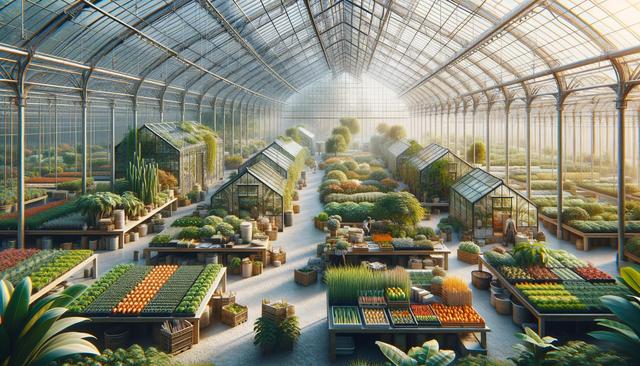Planning Your Greenhouse Project
Before diving into construction, it’s essential to understand how to set up a greenhouse at home effectively. The planning phase involves choosing the right location, determining the size, and deciding whether you want a freestanding or attached structure. Ideally, your greenhouse should receive at least six hours of sunlight daily, be sheltered from strong winds, and have access to water and electricity. These considerations help ensure that your plants will thrive and your greenhouse will be efficient to manage.
When planning, ask yourself the following:
- What types of plants do you intend to grow?
- How much space do you have available?
- What is your budget for the entire setup?
- Will you handle the installation yourself or seek professional help?
Answering these questions will help you make informed decisions as you move forward with your greenhouse build.
Selecting the Right Materials
Choosing the best materials for building a greenhouse is crucial for durability and temperature control. Common materials include aluminum, galvanized steel, wood, and various types of plastic or glass for the panels. Each has its own pros and cons. For example, aluminum is lightweight and rust-resistant, while wood offers a more natural look but may require more maintenance.
Here are some widely used materials and their features:
- Polycarbonate panels: Durable and offer good insulation
- Tempered glass: Aesthetic and long-lasting, but more expensive
- Galvanized steel frames: Strong and rust-resistant
- PVC or plastic film: Cost-effective and easy to work with
Opting for materials that suit your climate and maintenance preferences will ensure your greenhouse stands the test of time.
Understanding the Benefits of Greenhouse Gardening
One of the most rewarding aspects of this project is experiencing the benefits of growing your own food in a greenhouse. Not only does it provide access to fresh, pesticide-free produce, but it also offers a sense of self-reliance and sustainability. Greenhouse gardening allows you to extend your growing season, protect crops from pests and harsh weather, and experiment with a variety of plant species.
Additional advantages include:
- Lower grocery bills over time
- Educational opportunities for children and family members
- Reduction in carbon footprint due to less transportation of food
Whether you’re growing herbs, leafy greens, or tomatoes, a greenhouse can significantly enhance your gardening experience.
Budget-Friendly Options and Services
For those looking to get started without a hefty upfront investment, there are greenhouse kits with flexible payment options available. These kits often include pre-cut materials, instructions, and even tools, making them an accessible choice for beginners. Many retailers now offer installment plans, which allow you to spread out payments over time without compromising quality.
In addition, some greenhouse retailers offering installation services can take the pressure off DIY enthusiasts. Professional installers ensure that your structure is safe, level, and optimized for local weather conditions. This service is particularly helpful if you’re dealing with uneven terrain or complex designs.
When shopping for kits or services, consider:
- Warranty and support options
- Customer reviews and service ratings
- Availability of customization features
These factors can help you get the most out of your investment while simplifying the setup process.
Making the Most of Small Spaces
Not every homeowner has the luxury of a large backyard, but compact greenhouse systems for small backyards can be surprisingly efficient. These smaller models are designed to maximize vertical space and often include built-in shelving or modular designs. They’re perfect for urban dwellers or anyone looking to dip their toes into greenhouse gardening without committing to a full-size structure.
Some compact options include:
- Vertical greenhouses with tiered shelving
- Lean-to models attached to house walls
- Portable mini greenhouses for patios or balconies
These setups are not only space-saving but also energy-efficient, often requiring less heating and maintenance. They can be a great starting point and are typically easier to assemble and relocate as needed.
Conclusion: Start Small, Grow Big
Setting up a greenhouse at home is a practical and rewarding endeavor that offers long-term benefits for your health, wallet, and environment. Whether you’re working with ample space or a small backyard, there are tailored solutions to meet your needs. With the right materials, thoughtful planning, and possibly a bit of professional help, you can create a thriving garden oasis right outside your door. Explore your options, start small, and enjoy the journey of growing your own food in a controlled, sustainable way.




Leave a Reply